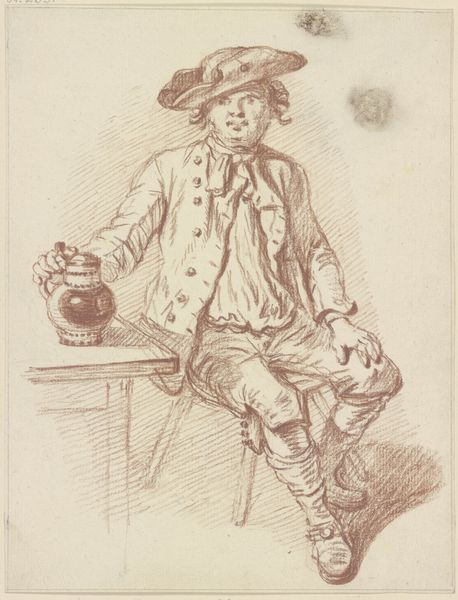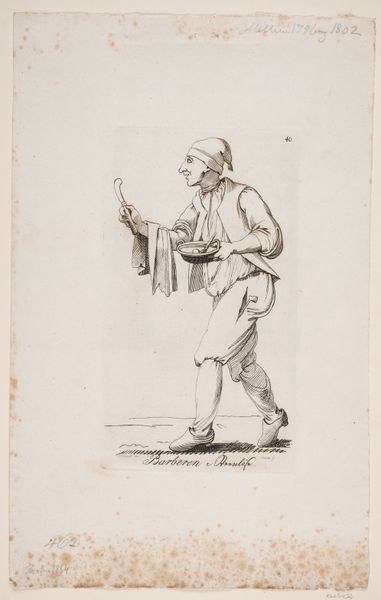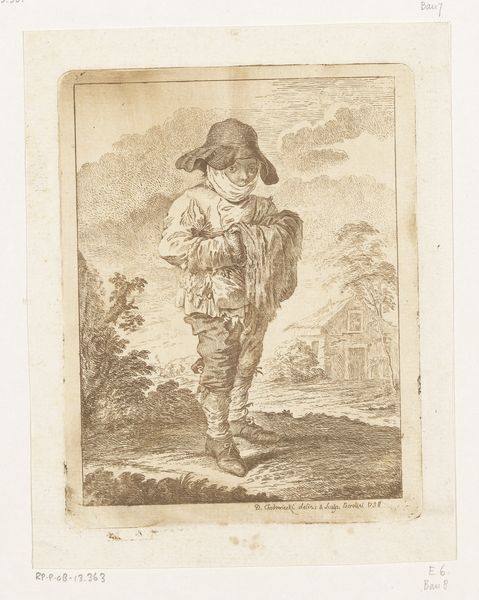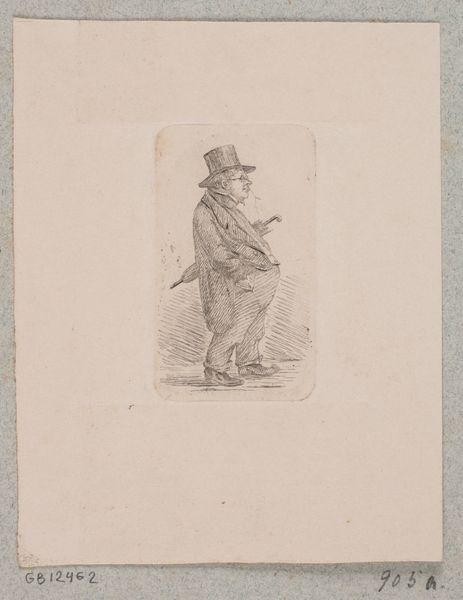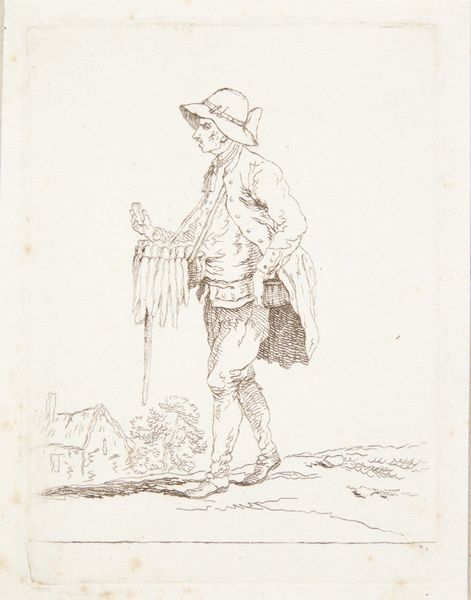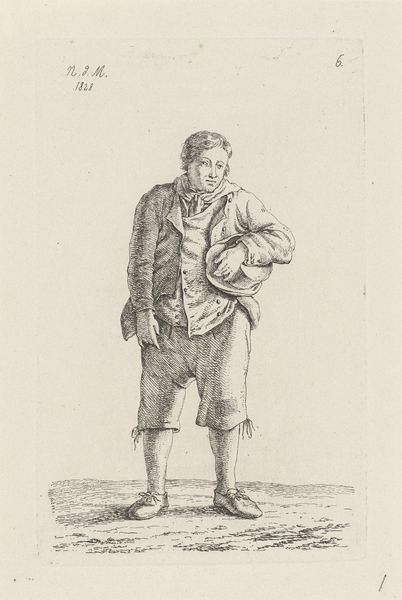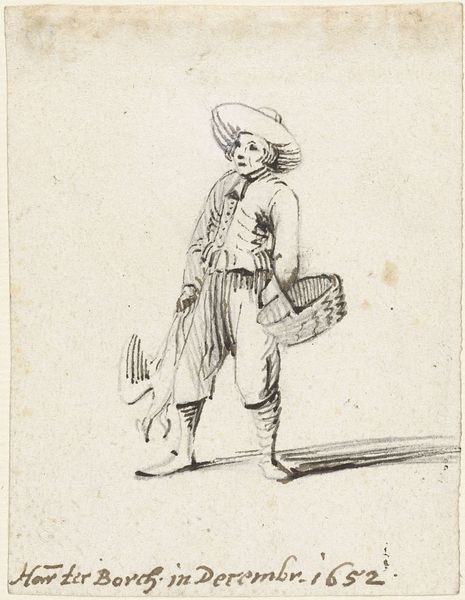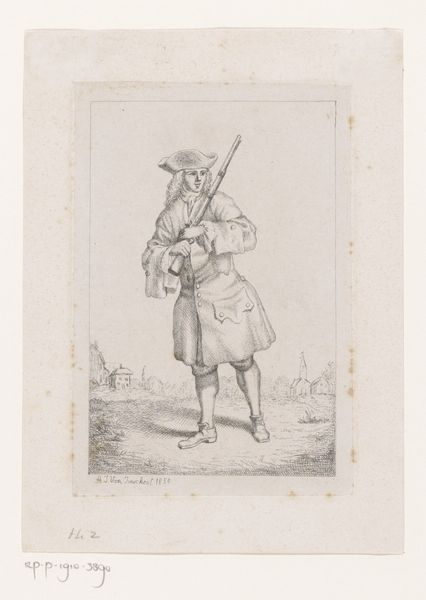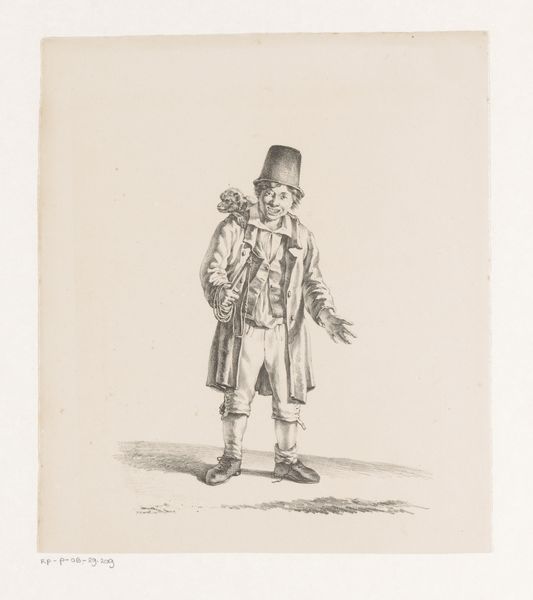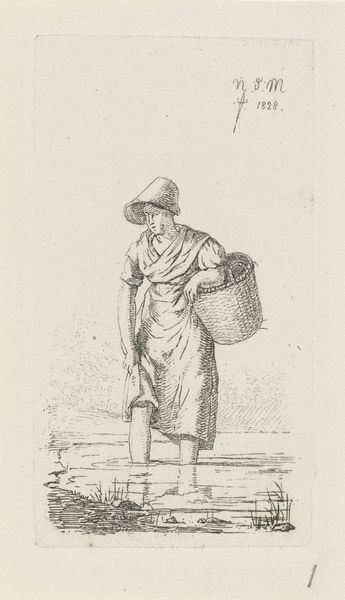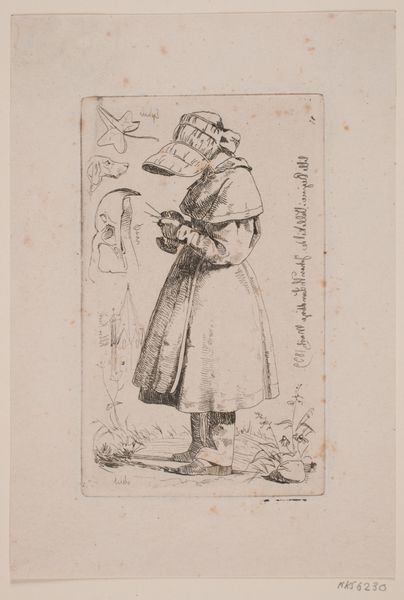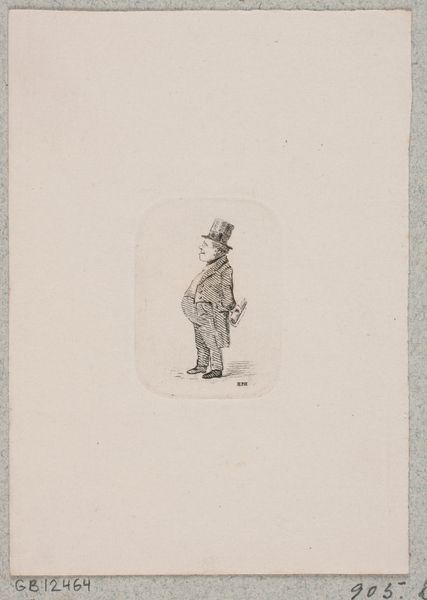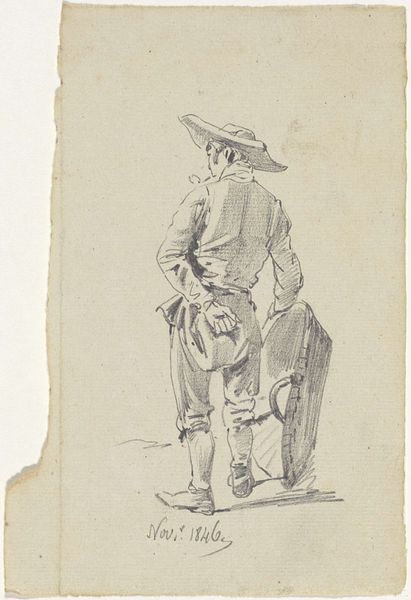
drawing, pencil
#
portrait
#
drawing
#
pencil sketch
#
romanticism
#
pencil
#
genre-painting
Copyright: Rijks Museum: Open Domain
Editor: We are looking at "Boy on clogs with reed basket" made before 1817 by Balthasar Paul Ommeganck, currently at the Rijksmuseum. It’s a pencil drawing. I’m struck by how carefully the artist has rendered the textures – the woven basket, the rough-hewn clogs. How do you interpret this work through its formal elements? Curator: What immediately stands out is the deliberate application of line and shading. Ommeganck uses hatching to build volume and define the contours of the figure, from the slight rounding of the boy's cheek to the folds in his clothing. Observe the contrast between the delicate, almost ethereal rendering of the face, and the more pronounced, heavier lines used for the basket. This contrast in the handling of line directs the eye and establishes a focal point. Editor: Yes, the face is captivating! It feels so much softer than the rest. The composition is rather simple too, with the boy centrally located. Does that simplicity hold significance? Curator: Precisely. Consider how the artist uses positive and negative space. The stark background draws all our attention to the subject and to appreciate its pure form. Also consider the materiality of the pencil itself – how the graphite is layered and manipulated to create variations in tone. Editor: It’s fascinating how much one can learn just by examining the use of line and texture. Curator: Indeed. Ignoring external narratives or context allows us to confront art on a purely aesthetic and structural level, uncovering an inherent visual language. Do you see that now? Editor: Yes, absolutely. I see the thought that goes into how it looks rather than what it might be.
Comments
No comments
Be the first to comment and join the conversation on the ultimate creative platform.
